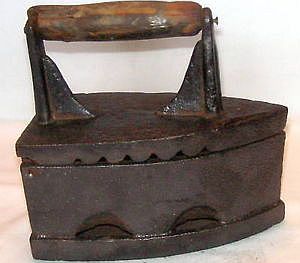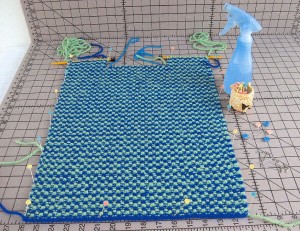![P1220895 [HDTV (1080)]A](http://chasingcentaurs.com/wp-content/uploads/2014/09/P1220895-HDTV-1080A-1024x736.jpg)
Summer is reluctantly drawing to its end here; there are all sorts of little reminders that winter is sneaking up on us. The cyclamen has begun to appear. Tiny clusters at the moment, but in a few weeks there’ll be large areas of these delicate pink plants with their distinctive flowers and leaves.
![P1220888 [HDTV (1080)]A](http://chasingcentaurs.com/wp-content/uploads/2014/09/P1220888-HDTV-1080A-300x227.jpg)
Most of the swallows have already left, but one particular swallow clan and their offspring remain. These have returned to their large communal nest on a balcony for the third year now. At least I think it’s the same extended family. Apparently swallows mate for life, and this group has certainly done its bit for the swallow population with three sets of hatchlings this season. This is probably why their flight has been delayed as the last of the baby swallows have only just left the nest. I suspect ma and pa are quite anxious for the youngsters to build up their strength so that they too can journey along the ancient and perilous migration paths.
Busy, busy these parents have been for months, zapping past my window from the first glimmers of dawn until they’re mingling with the emerging bats at end of day. I’m delighted that their mud home has remained unoccupied so far during the long winters, for I’ve noticed that these sturdy dwellings are often taken over by winter squatters, and once that happens, the swallows shun the nest.
![P1220884 [HDTV (1080)]A](http://chasingcentaurs.com/wp-content/uploads/2014/09/P1220884-HDTV-1080A-300x191.jpg)
I haven’t yet been able to identify the housebreakers which are small and somewhat sparrow-like, but they certainly do disrupt the swallow housing developments, and make an enormous mess of droppings from the high-rise apartments they have commandeered under the eaves.
Swallows feed on the wing, catching insects in mid-flight, but they flash by so quickly I’ve never yet been able to capture a decent photograph. Instead, here are pictures of a spotted flycatcher returning to her colourful home in the roof with an unfortunate grasshopper – dinner for the three raucous fledgings she was nurturing in June – and dessert of some sort of grub.
![P1050902 [HDTV (1080)]A](http://chasingcentaurs.com/wp-content/uploads/2014/09/P1050902-HDTV-1080A-300x218.jpg)
She spent the whole summer only a couple of feet from my study window, so I was able to watch her preparing the nest with cheerful snippets I’d made available. When I sew, I try to trim seams outside in the garden, while small pieces of yarn from knitting projects get tossed out the windows. These bits blow around and are quite often picked up by birds to weave into their nests.
![IMGP3633 [HDTV (1080)]A](http://chasingcentaurs.com/wp-content/uploads/2014/09/IMGP3633-HDTV-1080A-300x225.jpg)
![P1190020 [HDTV (1080)]A](http://chasingcentaurs.com/wp-content/uploads/2014/09/P1190020-HDTV-1080A-288x300.jpg)
Mama flycatcher was quite selective in what she chose to use, with a strong preference for red.
As for Raki, he was enthralled by the spectacle, and spent long periods chittering indignantly at the comings and goings, and although the nest is now empty he still stares hopefully up at it. But soon our feathered winter vistors will arrive and we all look forward to their antics.
![P1190012 [HDTV (1080)]A](http://chasingcentaurs.com/wp-content/uploads/2014/09/P1190012-HDTV-1080A1-1024x460.jpg)
![P1200796 [HDTV (720)]A](http://chasingcentaurs.com/wp-content/uploads/2014/09/P1200796-HDTV-720A.jpg)

![IMG_2823A [1024x768]](http://chasingcentaurs.com/wp-content/uploads/2014/09/IMG_2823A-1024x768.jpg)
![IMG_1738A [1024x768]](http://chasingcentaurs.com/wp-content/uploads/2014/09/IMG_1738A-1024x768.jpg)
![P1000016A [1024x768]](http://chasingcentaurs.com/wp-content/uploads/2014/09/P1000016A-1024x768.jpg)
![P1070872A [1024x768]](http://chasingcentaurs.com/wp-content/uploads/2014/09/P1070872A-1024x768.jpg)
![103-0342A [1024x768]](http://chasingcentaurs.com/wp-content/uploads/2014/09/103-0342A-1024x768.jpg)
![108-0829_IMGA [1024x768]](http://chasingcentaurs.com/wp-content/uploads/2014/09/108-0829_IMGA-1024x768.jpg)
![P1180199 [HDTV (1080)]A [1024x768]](http://chasingcentaurs.com/wp-content/uploads/2014/09/P1180199-HDTV-1080A-1024x768.jpg)
![P1110707 [HDTV (1080)]A [1024x768]](http://chasingcentaurs.com/wp-content/uploads/2014/09/P1110707-HDTV-1080A-1024x768.jpg)
![P1180798 [HDTV (1080)]A [1024x768]](http://chasingcentaurs.com/wp-content/uploads/2014/09/P1180798-HDTV-1080A-1024x768.jpg)
![MountainBirdsA [1024x768]](http://chasingcentaurs.com/wp-content/uploads/2014/09/MountainBirdsA-1024x768.jpg)
![IMG_8215A [1024x768]](http://chasingcentaurs.com/wp-content/uploads/2014/09/IMG_8215A-1024x768.jpg)
![IMG_8805A [1024x768]](http://chasingcentaurs.com/wp-content/uploads/2014/09/IMG_8805A-1024x768.jpg)
![IMG_4956A [1024x768]](http://chasingcentaurs.com/wp-content/uploads/2014/09/IMG_4956A-1024x768.jpg)
![P1070524A [1024x768]](http://chasingcentaurs.com/wp-content/uploads/2014/09/P1070524A-1024x768.jpg)
![P1070339 [1024x768]A [1024x768]](http://chasingcentaurs.com/wp-content/uploads/2014/09/P1070339-1024x768A-1024x768.jpg)
![P1220895 [HDTV (1080)]A](http://chasingcentaurs.com/wp-content/uploads/2014/09/P1220895-HDTV-1080A-1024x736.jpg)
![P1220888 [HDTV (1080)]A](http://chasingcentaurs.com/wp-content/uploads/2014/09/P1220888-HDTV-1080A-300x227.jpg)
![P1220884 [HDTV (1080)]A](http://chasingcentaurs.com/wp-content/uploads/2014/09/P1220884-HDTV-1080A-300x191.jpg)
![P1050902 [HDTV (1080)]A](http://chasingcentaurs.com/wp-content/uploads/2014/09/P1050902-HDTV-1080A-300x218.jpg)
![IMGP3633 [HDTV (1080)]A](http://chasingcentaurs.com/wp-content/uploads/2014/09/IMGP3633-HDTV-1080A-300x225.jpg)
![P1190020 [HDTV (1080)]A](http://chasingcentaurs.com/wp-content/uploads/2014/09/P1190020-HDTV-1080A-288x300.jpg)
![P1190012 [HDTV (1080)]A](http://chasingcentaurs.com/wp-content/uploads/2014/09/P1190012-HDTV-1080A1-1024x460.jpg)
![P1200796 [HDTV (720)]A](http://chasingcentaurs.com/wp-content/uploads/2014/09/P1200796-HDTV-720A.jpg)
![P1220862 [HDTV (1080)]](http://chasingcentaurs.com/wp-content/uploads/2014/09/P1220862-HDTV-1080-300x225.jpg)


